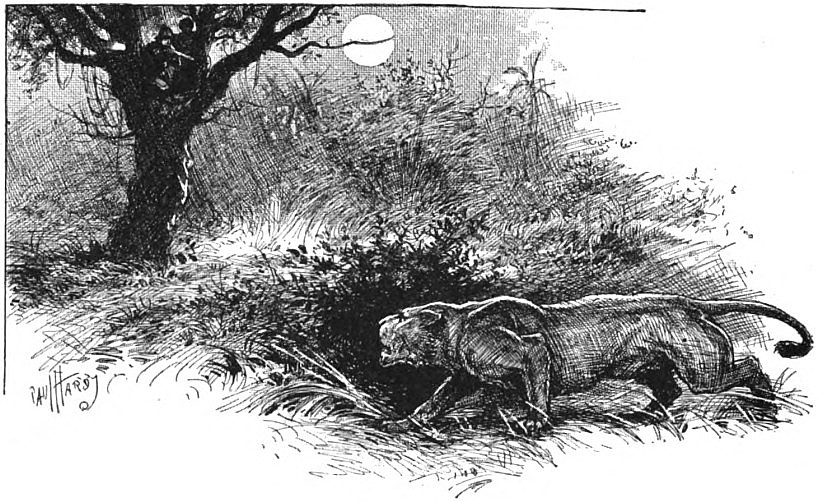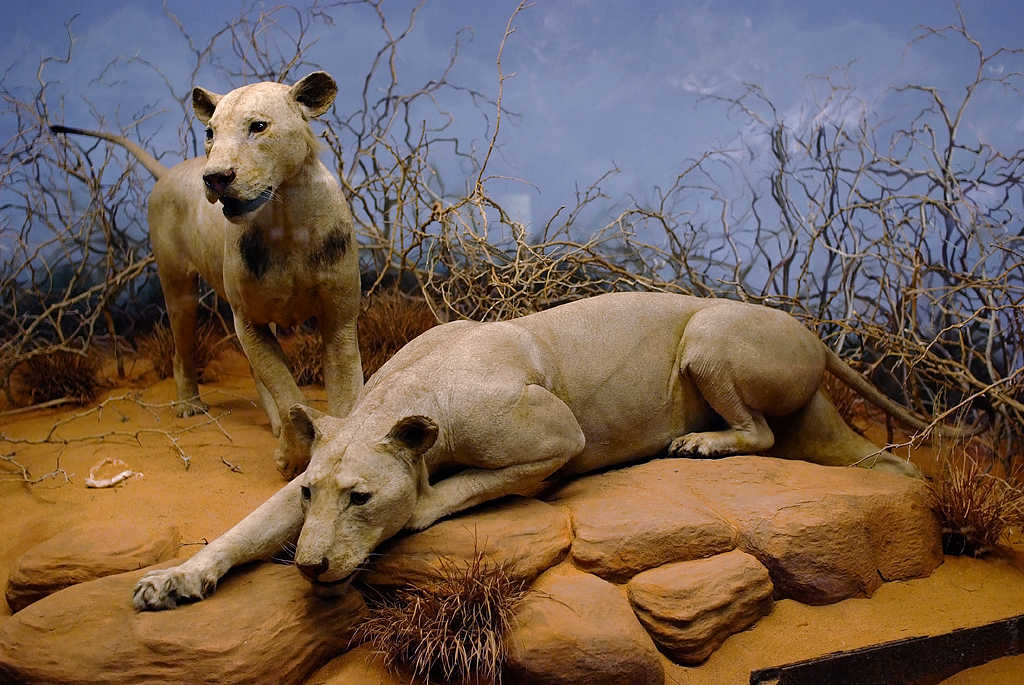239-The Man-Eaters of Tsavo
Futility Closet
Greg Ross
4.8 • 748 Ratings
🗓️ 4 March 2019
⏱️ 34 minutes
🧾️ Download transcript
Summary

In 1898, two lions descended on a company of railway workers in British East Africa. For nine months they terrorized the camp, carrying off a new victim every few days, as engineer John Patterson struggled to stop them. In this week's episode of the Futility Closet podcast we'll track the "man-eaters of Tsavo" and learn what modern science has discovered about their motivations.
We'll also consider more uses for two cars and puzzle over some prolific penguins.
Intro:
MIT drops a piano off a building every year.
French architect Étienne-Louis Boullée proposed honoring Isaac Newton with a sarcophagus inside a 500-foot globe.
Sources for our feature on the Tsavo man-eaters:
John Henry Patterson, The Man-Eaters of Tsavo, 1907.
J.H. Patterson, "The Man-Eaters of Tsavo: The Lions That Stopped a Railway," Wide World Magazine 10:55 (October 1902), 3-12; 10:56 (November 1902), 112-118.
J.H. Patterson, "The Man-Eating Lions of Tsavo," Field Museum of Natural History, 1926.
Philip Caputo, Ghosts of Tsavo, 2002.
Bruce D. Patterson, The Lions of Tsavo, 2004.
Julian C. Kerbis Peterhans and Thomas Patrick Gnoske, "The Science of 'Man-Eating' Among Lions Panthera leo With a Reconstruction of the Natural History of the 'Man-Eaters of Tsavo,'" Journal of East African Natural History 90:1 (2001), 1-41.
T.P. Gnoske, G.G. Celesia, and J.C. Kerbis Peterhans, "Dissociation Between Mane Development and Sexual Maturity in Lions (Panthera leo): Solution to the Tsavo Riddle?" Journal of Zoology 270:4 (2006), 551-560.
Justin D. Yeakel, et al., "Cooperation and Individuality Among Man-Eating Lions," Proceedings of the National Academy of Sciences 106:45 (2009), 19040-19043.
Bruce D. Patterson, et al., "Livestock Predation by Lions (Panthera leo) and Other Carnivores on Ranches Neighboring Tsavo National Parks, Kenya," Biological Conservation 119:4 (2004), 507-516.
Bruce D. Patterson, "On the Nature and Significance of Variability in Lions (Panthera leo)," Evolutionary Biology 34:1-2 (2007), 55-60.
Bruce D. Patterson, Ellis J. Neiburger, Samuel M. Kasiki, "Tooth Breakage and Dental Disease as Causes of Carnivore-Human Conflicts," Journal of Mammalogy 84:1 (Feb. 28, 2003), 190–196.
Roland W. Kays and Bruce D. Patterson, "Mane Variation in African Lions and Its Social Correlates," Canadian Journal of Zoology 80:3 (March 2002), 471.
Larisa R.G. DeSantis and Bruce D. Patterson, "Dietary Behaviour of Man-Eating Lions as Revealed by Dental Microwear Textures," Scientific Reports 7:1 (2017), 904.
Ellis J. Neiburger and Bruce D. Patterson, "The Man-Eaters With Bad Teeth," New York State Dental Journal 66:10 (2000), 26.
"The Tale Teeth Tell About Legendary Man-Eating Lions of Tsavo," Laboratory Equipment, April 19, 2017.
Alba Tomasula y Garcia, "The Lions of Tsavo: Man-Made Man-Eaters," Western Humanities Review 68:1 (Winter 2014), 195-200.
Paul Raffaele, "Man-Eaters of Tsavo," Smithsonian Magazine, January 2010.
Jason Bittel, "Why Man-Eating Lions Prey on People -- New Evidence," National Geographic, April 19, 2017.
Mindy Weisberger, "What Drove Tsavo Lions to Eat People? Century-Old Mystery Solved," Live Science, April 19, 2017.
David Salisbury, "The Tale Teeth Tell About the Legendary Man-Eating Lions of Tsavo," Vanderbilt University, April 19, 2017.
Can Buckley, "Irishman's Account of Man-Eating Lions, 'the Ghost' and 'the Darkness,' in Africa," Irish Examiner, April 29, 2017.
Ed Yong, "How Many People Did the Man-Eating Lions of Tsavo Actually Eat?" Discover, Nov. 2, 2009.
Gemma Tarlach, "Infamous Man-Eaters of Tsavo Ate Like Zoo Animals," Discover, April 19, 2017.
Jennifer McNulty, "Legendary 'Man-Eating' Lions of Tsavo Likely Ate About 35 People -- Not 135, Say Scientists," UCSC Newscenter, Nov. 1, 2009.
Hannah Osborne, "Infamous Man-Eating Tsavo Lions Were Apparently Suffering From Toothache," Newsweek, April 19, 2017.

Restored by a taxidermist, the lions are currently on display in the Field Museum of Natural History in Chicago.
Listener mail:
"Sweden's Jobs Agency to Lay Off 4,500 Staff," The Local Sweden, Jan. 30, 2019.
Greg Myre, "Gas Lines Evoke Memories of Oil Crises in the 1970s," The Picture Show, National Public Radio, Nov. 10, 2012.
Wikipedia, "Odd–Even Rationing" (accessed Feb. 23, 2019).
Wikipedia, "1973 Oil Crisis" (accessed Feb. 23, 2019).
Wikipedia, "1979 Oil Crisis" (accessed Feb. 23, 2019).
Carl Bialik, "Fuel Rationing Is Hard to Gauge," Wall Street Journal, Nov. 16, 2012.
This week's lateral thinking puzzle was contributed by listener Mat Spedding, based on an item he heard on the podcast No Such Thing As a Fish. Here are three corroborating links (warning -- these spoil the puzzle).
You can listen using the player above, download this episode directly, or subscribe on Google Podcasts, on Apple Podcasts, or via the RSS feed at https://futilitycloset.libsyn.com/rss.
Please consider becoming a patron of Futility Closet -- you can choose the amount you want to pledge, and we've set up some rewards to help thank you for your support. You can also make a one-time donation on the Support Us page of the Futility Closet website.
Many thanks to Doug Ross for the music in this episode.
If you have any questions or comments you can reach us at [email protected]. Thanks for listening!
Transcript
Click on a timestamp to play from that location
| 0:00.0 | Welcome to the Futility Closet Podcast, forgotten stories from the pages of history. |
| 0:14.2 | Visit us online to sample more than 10,000 quirky curiosities from MIT's pianos to Isaac Newton's cenotaph. This is episode 239. I'm Greg Ross. |
| 0:24.4 | And I'm Sharon Ross. In 1898, two lions descended on a company of railway workers in British |
| 0:30.8 | East Africa. For nine months, they terrorized the camp, carrying off a new victim every few days, |
| 0:36.8 | as engineer John Patterson struggled to |
| 0:39.4 | stop them. In today's show, we'll track the man-eaters of Savo and learn what modern science has |
| 0:45.5 | discovered about their motivations. We'll also consider more uses for two cars and puzzle over some |
| 0:52.3 | prolific penguins. |
| 1:05.6 | On March 1st, 1898, a British engineer named John Henry Patterson arrived in British East Africa, was today Kenya. He'd been sent to work on the construction staff of the Uganda |
| 1:10.3 | railway, which would connect |
| 1:11.6 | Lake Victoria to the Indian Ocean. When he arrived, the rails had been laid as far as the Tsavo River, |
| 1:16.8 | about 130 miles from the coast. At the river, the railworkers had built a temporary bridge and then |
| 1:21.9 | pressed on toward the sea. Patterson's job was to build a permanent structure and to complete |
| 1:26.4 | all the other work for 30 miles on each side of the river. |
| 1:29.7 | He would oversee a large group of laborers, mostly Indian, who lived in several camps spread over an area of eight miles. |
| 1:36.5 | He'd been at Zavo only a few days when he received word that two workers had been carried off from their tents in the night. |
| 1:42.4 | That didn't seem alarming. He imagined that |
| 1:44.4 | other workers had attacked them to get their savings. But then one morning he was roused with the |
| 1:48.7 | horrible news that one of his officers had been seized in his tent, dragged away, and eaten. At the |
| 1:54.2 | site of the attack, he could see the furrows left by the victim's heels as he was hauled out of the |
| 1:58.2 | tent. The sand also distinctly showed the footprints of a lion. |
| 2:02.2 | One witness said that the officer had been sitting near the open door of the tent. At about |
... |
Please login to see the full transcript.
Disclaimer: The podcast and artwork embedded on this page are from Greg Ross, and are the property of its owner and not affiliated with or endorsed by Tapesearch.
Generated transcripts are the property of Greg Ross and are distributed freely under the Fair Use doctrine. Transcripts generated by Tapesearch are not guaranteed to be accurate.
Copyright © Tapesearch 2025.

